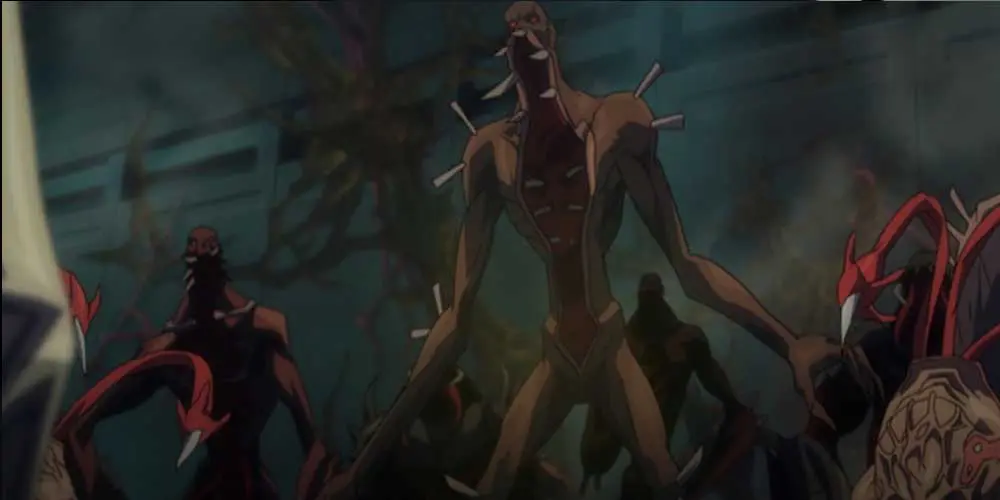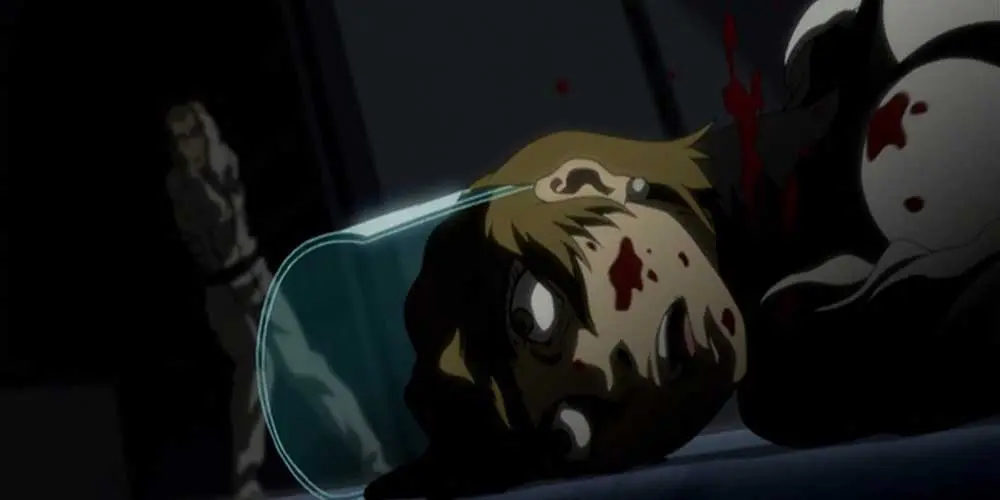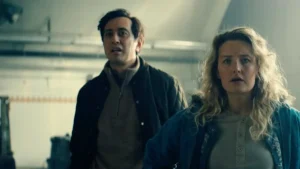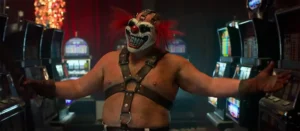Summary
Dead Space: Aftermath is the closest thing to a must-see series fans are probably going to get, but also the best entry point yet for genre fans and people interested in animated storytelling generally.
Whenever I watch a horror film, I like to play a little game. The objective is to guess how and when each of the characters are going to get killed off, and the number of correct answers you manage to rack up determines how smug you’re allowed to be with your girlfriend when she inevitably doesn’t do as well. It’s a lot of fun and I highly recommend it. I don’t, however, recommend playing it during Dead Space: Aftermath, the second full-length animated movie in the ever-popular Dead Space multimedia universe, because it throws a curveball right from the start by opening with the survivors of its disaster being rescued.
As marines board the deserted, carnage-strewn corridors of the USG O’Bannon, we’re introduced to the four mismatched individuals who will function as our principle characters: Nicholas Kuttner, head of security; Alejandro Borgas, an engineer; Isabella Cho, a doctor; and Nolan Stross, the ship’s chief science officer.
The group is quickly incapacitated and transported to the Marine battleship Braxus, which is on its way to the Sprawl – a huge space station built on Titan (one of the moons of Saturn) and also the setting for the Dead Space 2 video game. It quickly becomes apparent that all is not what it seems, and a pair of interrogators is brought in to decipher the happenings aboard the O’Bannon before the Braxus reaches the Sprawl.
These interrogations act as a narrative framing device, allowing each of the characters to tell the story through flashbacks as they all recount their own version of events. As a concept, this isn’t particularly original, but here it works surprisingly well, allowing us to not only see radically different perspectives on the same event but also how those events have affected the psyche of whoever happens to be telling the story. Aside from the guy who constantly calls out for his daughter being a bit of a cliché, I generally liked each of the four characters enough for their stories to keep me interested all the way through.

Unlike Downfall, the first Dead Space movie experience, Aftermath doesn’t rely on a single, comic book-style of art and animation. Rather, the portions set aboard the Braxus are presented in an (admittedly crude) CG rendering, while each individual flashback plays out in a different artistic style. I was worried this format may come across as somewhat schizophrenic, but it actually worked out as one of the stronger elements of the film, providing a range of interesting aesthetics while adding a strong sense of separation between each character’s versions of events. Some portions look vastly better than others, but none of them is long enough for it to really become an issue.
While we’re comparing Aftermath to its predecessor, it’s also worth mentioning how the pacing is wildly different. In Downfall, the basic premise was introduced and vaguely explained in the first ten minutes, leaving the remaining hour to show the massacre aboard the Ishimura in as much detail as possible. Here, we have a much healthier balance of exposition and action, with the former being presented in a reasonably dynamic and interesting way, and the latter just as vivid and brutal, if not more so, than it was before. Once again, the most impressive element on display here is the art and visual design, which juxtaposes the grim, industrial feel of the O’Bannon with the almost surgically pristine, white-walled corridors of the Braxus. The movie looks great more or less throughout, with the weakest elements (the wonky CG) thankfully being the least prominent.
As a sequel, Aftermath improves on Downfall in pretty much every way. It has a more interesting and complex narrative, a greater range of visual tricks, and a group of characters at its centre who provide some of the much-needed emotional depth Downfall was lacking. There’s still nothing revolutionary here, but as an addition to a franchise popularized by another medium entirely, Aftermath really should be regarded as a success. It’s the closest thing to a must-see series fans are probably going to get, but also the best entry point yet for genre fans and people interested in animated storytelling generally. So, consider that a dismembered thumbs up.




